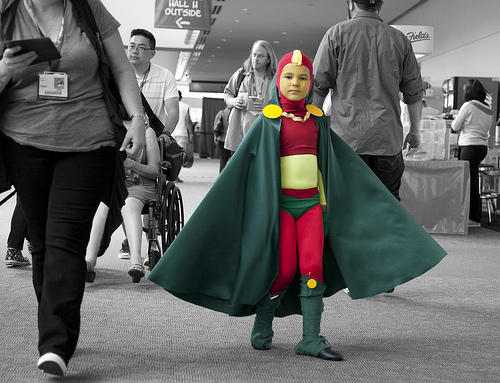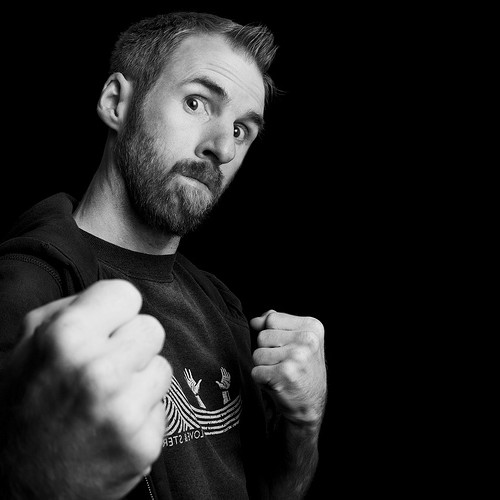Make Me Like Your Protagonist or I’ll Stop Reading
We’re continuing our look at the second corner pillar of novel construction—protagonist with a goal. Last week we explored how our main character must have a visible goal, and paired with that plot goal is a spiritual one, which is tied closely with the character’s core need. Both goals are “resolved” at the climax of the novel.
Why do I say “resolved” instead of reached? Because the hero may fail to reach his goals—and that might be the point of your novel and your intent. You’re the author; you get to decide that. In a post-modern-style novel, a protagonist may not only fail to reach her goal, she may not change or learn from the ordeals she’s been through, which would be sad, but, hey—that’s life, right? And that could be the structure of a strongly built novel. It all depends on your theme and the take-home message you mean to leave with your reader.
What’s in a Character Arc?
We’ve all heard about character arcs, but I don’t see much written about how you determine just what that arc is. Writers are told characters have to grow and change, perhaps learn some important life lesson by the end of the novel. Or maybe not.
There are plenty of novels that don’t show much of a character arc. Rather, the focus of the book is tied in solely with plot. Genres like thrillers and romance sometimes are all about plot, with the characters there to serve the plot, rather than the other way around. Some readers don’t care about character growth or change. And that’s fine. Readers read for many different reasons. There are some books I’ve thoroughly enjoyed reading that are hilarious rides or tense suspense, and the protagonist doesn’t “grow” or “learn anything” by the end of the novel. Part of that is genre; part is the author’s choice.
But if that’s the case, then the burden of the novel rests on the plot, and a writer engaging in developing such a story will need to be sure to have that clear visible goal for the protagonist. And that goal should be tying in with the theme and featuring some very solid conflict (the third and fourth structural pillars) or that story might have some substantial fatal flaws.
You Still Have to Have a Goal
With or without a strong character arc, know that you still must have a protagonist with a clear goal. A thriller in which a character is being chased and is running for his life (makes me think of The Bourne Identity and other such thrillers—which I enjoy immensely) may seem like a protagonist without a goal. But, to the contrary, Jason Bourne and the like have very clear goals. The goal may be to get through/out/somewhere alive. And Jason Bourne not only needs to find a place of safety; he also needs to find out who he really is, which is the kicker to the basic chase-’em concept. Thrillers that appear to have no real protagonist goal often have a very strong and obvious one.
So can you create any ol’ protagonist? Sure you can—but that doesn’t mean readers will want to read your book. I’m surprised at how many manuscripts I edit and critique that have either no defined protagonist or one I really don’t like. Oftentimes beginning writers have a confused notion about the character arc, thinking that if they open a novel with a really dislikable character who changes by the end of the book into a really likable guy, that’s the ticket. Sorry to say, it’s not.
Don’t Make Me Wait to Like Your Protagonist!
Why? Because readers want to get engaged and start caring for that protagonist right away. Did I say “right away”? I did. Meaning, within the first few pages. Preferably on the first page. Try the first paragraph (of the scene in which you introduce your protagonist. It may not be your first scene).
Sheesh, is that really so important? The closer you can get to the first paragraph in hooking your reader’s interest in your protagonist, the better. Not a whole lot of readers are going to patiently wait for an author to show something compelling about the protagonist. How long are they willing to wait?
I’ll wait quite a while, if it’s a book by an author I love. I trust (and hope) they will bring me to that place of contentment quickly. But if not, I’ll give them a few pages, maybe even a chapter or two. And then I will give up. But I won’t give that much leeway to an author I’m unfamiliar with.
If readers are reading your book, and they are not faithful fans, don’t expect them to stick around waiting to like your protagonist. Not in this instant-gratification fast-food age. People today want things to happen fast—their web pages to load, their food to be served in record time, and for slow cars to pull over so they can speed by to their destination. Maybe some evocative writing and an unusual setting might buy a few pages of readers’ attention. But not too many pages.
Don’t Risk Losing Your Readers
I’m sure there are moans of disagreement out there. However, why risk losing your readers if you don’t have to? You don’t have to sacrifice your integrity or writing style to accomplish this feat of presenting an appealing protagonist. And there are many ways to make a character appealing. But the best way is to show vulnerability. Start your novel with a scene in which your character’s passion, core need, and deepest fear comes into play. These key elements show that a character is human, like you and me. Passion, need, and fear show not only vulnerability but humanity. And what bonds reader to character the fastest is a sense of sympathy. When you create a sympathetic character, that’s what will hook your reader and make her want to know more.
If you have this is your primary goal for your first scene—to make the reader really like and care for your character—you may have to rethink the starting point for your book. Too often novels start in the wrong place. And usually in places that don’t “showcase” well this vulnerability and humanity that’s needed.
So next week, we’ll go even deeper into your protagonist and take a look at negative or dark “heroes” and how these concepts of goal and vulnerability come into play. In the meantime, start thinking about your main character and ask yourself some tough questions about how you are showing her humanity and vulnerability, and whether you are opening your novel with just the right scene to reveal her core need, greatest fear, and/or deepest passion (which should tie in with your book’s theme).
Inspection checklists:
Inspection Checklist 1-concept with a kicker
Photo Credit: San Diego Shooter via Compfight cc












The issue with wanting to write a protagonist who is likeable by all or sympathetic for all is, it will not be applicable to everyone.
What I like in a character, someone else may not like. What you term as sympathy might result in a weak character.
Is it not possible to start a novel with a strong character who is a thief (hence law-breaker) and still hold the reader’s attention?
Destiny, you don’t have to begin the novel with the protagonist, but you will want to get him/her into a scene quickly. If not in the opening scene, the very next one. And yes, although everyone has different tastes when it comes to characters they like, there are some basic qualities every protagonist should have in order for the reader to care about him. personalities, goals, needs can differ, but humans relate to certain endearing qualities that make us like others, and this should be the aim of the novelist–to create a sympathetic character. Next week I’ll be talking about dark protagonists and how to do the same for those types.
Looking forward to that!!
Great piece, but I had the same thoughts as Destination Infinity (the previous commenter). A protagonist needn’t be a universally likeable character — he or she needs to be intriguing and magnetic. For instance, I love Humbert Humbert (from LOLITA), but I certainly wouldn’t want to hang out with the guy.
I’m looking forward to your follow-up piece on dark protagonists, C.S.
Best,
GL
I’ve gone back and rewritten my opening to show the main character’s vulnerability. I really like it a lot better than opening with “action.” It’s not very long. Half a page. But it sets up who he is and the root of his problem.
Thanks for the information. It’s making me rethink my opening. I’m sure there’s a way I can make my main character more likeable to the reader.
Am I correct in assuming this requirement applies to the second, third… episode of a series? Or, is there a different expectation with a series?
If you mean, we need to like the protagonist right away, yes, that applies to every book. Readers sometimes start a series in the middle, and authors should write each book with that in mind. Which means not only making sure all the characters are reintroduced in a way that establishes their place in the story but getting the reader attached right away.
I am a new reader to your blog and I am really enjoying dipping in. I just breathed out a sigh of relief there. My main character delves right into her fears on the first page and she sure show naked vulnerability. Thanks for calming me down. The book is my first and the first draft is with my first ever beta reader as I type!!! Breathe breathe….
That is very useful. Making me think that the protagonist can also be likable and unlikeable depending on the plot. I do agree though with what you say about ‘don’t lose the readers.’ Would love to hear more about that sometime.
I like your thoughts about getting the reader involved with a character EARLY. Would it be possible to introduce the reader to a dark protagonist, a kidnapper, and twist the reader so much that they are pulling for the kidnapper on the last page?
According to readers who write reviews, I believe I have accomplished this. It was a challenging but fun write. I know I could have breathed more life in the story with more dialogue but I chose not to go with that style.
If you care to check my impressions, search Whit Gentry on Amazon and read about Revenge…No Statute of Limitation.
Thanks for the great advice.
I’m with Yvonne. I’m excited about the dark protagonist post.
Travis Maddox in Beautiful Disaster comes to mind.
cslakin – Your password requirement can be a bit frustrating if you’re commenting and not used to it. I wrote a much longer and more informative comment and forgot to fill in the password correctly and lost all of it. 🙁
Thanks for the great post. I just completed my first novel and I wrestled with this concept quite a bit. I rewrote the beginning over and over in an effort to “show” the likeability of the protagonist. It is so hard to do in a few paragraphs. I like what you said, “Start your novel with a scene in which your character’s passion, core need, and deepest fear comes into play.” This is concrete advice. I have a question. What are your thoughts on the balance of revealing the character’s deepest fear without portraying him or her as sniveling and fearful?
That’s really very easy to do. You can show a character passionate and concerned about something, even fearful, without making them appear weak. The strongest heroes are aware of the things they fear but they face those fears. I believe it’s all in how you portray the character’s attitude about everything–life, himself, his goals, etc. Think about Liam Neeson in Taken or Harrison Ford (in just about every one of his movies) in Air Force One. We love strong, brave characters like that who also easily show their fear. It’s what they do with that fear that gives them greatness. I’m all for showing vulnerability of heroes.
There’s a pretty wise saying: show me how much you care before you show me how much you know. That’s akin to saying that the people you deal with in life should be “open” to you, and demonstrate their concern before dispensing advice. The alternative is someone cold, stony, aloof…not exactly people we trust in life.
Similarly, your point about showing protagonist vulnerability is crucial. Interconnectedness with anyone–in real life, or on the page–gets back to what we all share as individuals: fear, hopes and vulnerability. Without at least one of those qualities in a protagonist, you’re dealing with someone who is two-dimensional.
Writers often resist this truth. This week I’ll be talking about those unlikable “dark protagonists.” It really isn’t all that hard to make readers like characters, even snarky antisocial ones. Just one little glimpse of vulnerability and the indication the character doesn’t like his own flaws and wishes he could be different can be the ticket.
A great post, but I’d suggest that we need the reader to empathise with the protagonist rather than necessarily like them. As another commenter mentioned, it’s near-impossible to create a character who every reader will like. But you can create one who every reader can at least relate to or whose situation/predicament/problem they can understand.
I suppose the word “like” trips some people up. A matter of semantics. You can really like an unlikable character. Doesn’t mean you want to be friends with him or agree with his views or values. You “like” his character and are engaged and care about him. I don’t mean the word as a term of affection. One dictionary definition of “like” is to be suitable or agreeable.
A great topic here, and I’m also looking forward to the next “darker” post topic. Fixing character strength and vulnerability is even more important when you’re telling a multiple viewpoint story. It helps the reader to form a stronger picture (memory) of the ensemble cast.
I love the double meaning of this title! In order for you to create a good story, readers need to like your characters as people, but that can only be done when characters are like real humans.
My first novel, written when I was in high school, featured a protagonist who was not at all likeable. She was ordinary, uninteresting, and unmotivated by any natural human drives. After rereading it years later, I realized that I could have had a compelling story if she had been more like people and more likeable.